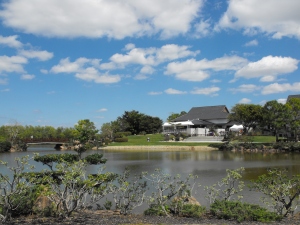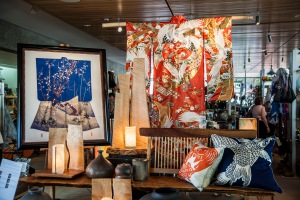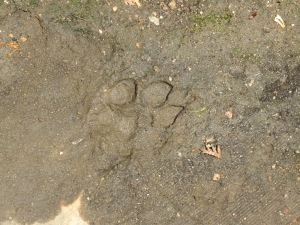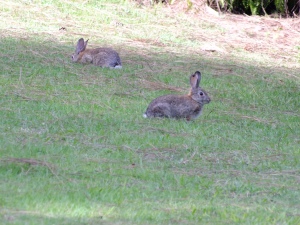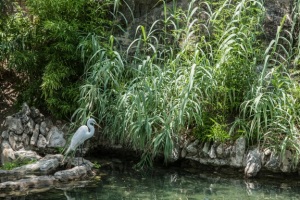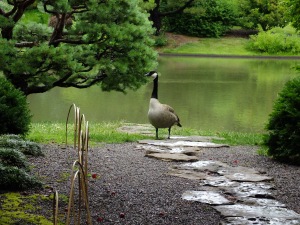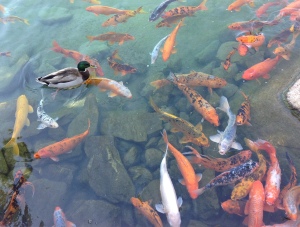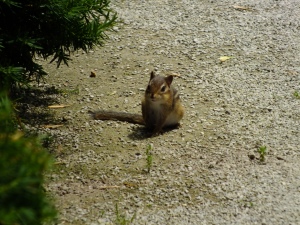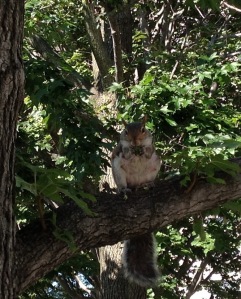
cover photo by David Cobb of the hexagonal yukimi style lantern at the Washington Park Arboretum in Seattle
A new look at Japanese gardens in North America — Quiet Beauty — provides the viewing public with detailed information and delightful photographs on 26 peaceful places across the continental United States and into Canada.
Author Kendall H. Brown is a professor of Asian art history at California State University Long Beach. Photographer David M. Cobb is a member of the North American Nature Photography Association, Garden Writers Association, and Professional Photographers of America.
Released by the esteemed publishing house Tuttle Publishing, this beautiful book offers history and invites thoughtfulness on how these gardens came to be and what they offer to us now. Insightful text is accompanied by more than 180 stunning color photographs and a few reproductions of antique postal cards.
In the introduction — Places to Dream — Dr. Brown notes, “Japanese gardens or, more accurately, Japanese-style gardens, in North America offer distinct pleasures. In contrast to the cacophony of cities, the anonymity of suburbs, and even the anxiety of deserts or forests, these gardens can provide beautifully controlled environments. In artful landscapes we lose ourselves in a path woven around a pond and a harmonious stone arrangement; we delight in the variegated colors of graceful koi and the bright hues of blossoming plums; and we are calmed by a stream’s gentle murmur and the dappled greens of moss. Another kind of pleasure is contextual and social rather than sensory and psychological. Japanese gardens in North America are often found where we least expect them, and in places unknown in pre-modern Japan. Thus we feel a special delight in discovering a ‘dry garden’ of stones and sand at a museum, a lush pond garden on a college campus, or a waterfall-fed stream garden in a hospital. Those familiar with gardens in Japan may also enjoy Japanese-style gardens intellectually, noting creative plant substitutions or thoughtful ways of interpreting Japanese design principles within distinctly North American spaces.”
Dr. Brown takes three eras posited by garden historian Makoto Suzuki of the Nodai Institute, professor at Tokyo University of Agriculture, and expands them to five: the age of world fairs and expositions, building bridges, innovation by adaptation, expansive visions and traditions transformed.
During the past ten years. I have read many articles by Ken Brown and have heard him speak at several conferences. I serve on the editorial board of the North American Japanese Garden Association (NAJGA) which editorial board he chairs. In person, I can verify that Dr. Brown delivers a substantial amount of information in a short amount of time — all of it masterfully accompanied by photographs, post cards, newspaper clippings and other visual aids along with a good sense of humor and split second timing. There are times I have felt he is delivering information faster than I can absorb it so I am delighted to have such a beautiful volume I can savor at leisure.
I have a special appreciation for David Cobb’s photographs. My husband and I have been to many of the places depicted and know what it takes to get the perfect image of that spot. So many of Cobb’s shots are truly breathtaking.

back cover photo by David Cobb of the Japanese garden at Fort Worth Botanic Garden in Texas
Gardens featured in Quiet Beauty: The Japanese Gardens of North America are:
the Japanese Tea Garden in Golden Gate Park, San Francisco California 1894;
Japanese Garden at the Huntington Botanic Garden, San Marino California 1911 (also 1968, 2011);
Maymont Japanese Garden, Richmond Virginia, 1911 (1977);
Japanese Hill and Pond Garden at the Brooklyn Botanic Garden, New York 1915;
Hakone Estate and Garden, Saratoga California 1918;
Shofuso Japanese House and Garden, Philadelphia Pennsylvania 1958;
Japanese Garden at the Washington Park Arboretum, Seattle Washington 1960;
Nitobe Memorial Garden at the University of British Columbia, Vancouver B.C. Canada 1960;
Japanese Garden at the Blodel Reserve, Bainbridge Island, Washington 1961 (1978, 1986);
Portland Japanese Garden, Portland Oregon 1963;
Japanese Garden in San Mateo Central Park, San Mateo California 1965;
Nikka-Yuko Japanese Garden, Lethbridge, Alberta 1966;
Nishinomiya Garden in Mani to Park, Spokane Washington 1974;
Japanese Garden in the Fort Worth Botanic Garden, Fort Worth Texas 1973;
Shomu’en at Cheekwood, Nashville Tennessee 1990;
Seiwa’en at the Missouri Botanical Garden, St. Louis Missouri 1977;
Sansho’en at Chicago Botanic Garden, Glencoe Illinois 1982;
Shofu’en at the Denver Botanic Gardens, Denver Colorado 1979;
Suiho’en at the Donald C. Tillman Water Reclamation Plant, Van Nuys California 1984;
Seisuitei at the Minnesota Landscape Arboretum, Chanhassen Minnesota 1985 (1996);
Anderson Japanese Gardens, Rockford Illinois 1978;
Japanese Garden at the Montreal Botanical Garden, Montreal Quebec 1988;
Tenshin’en at the Boston Museum of Fine Arts, Boston Massachusetts 1988;
Roji’en in the Morikami Museum and Japanese Gardens, Delray Beach Florida 2001;
R0ho’en in Margaret T. Hance Park, Phoenix Arizona 2002; and
Garden of the Pine Wind at Garven Woodland Gardens, Hot Springs Arkansas 2001.
Marvelous additions in the appendices include garden contacts and a select bibliography including books, journals and websites plus a listing of 75 important Japanese gardens in North America, five of which are in the state of Hawaii.
The Hawaii gardens appearing in this list include:
the Cultural Gardens at Honolulu International Airport 1967;
Imin (East West) Center at the University of Hawaii-Manoa 1963 (teahouse 1972);
Byodo’in Gardens, Kaneohe Oahu 1968;
Japanese Garden and Teahouse at Kepaniwai Park, Wailuku Maui 1968 (teahouse 1972); and
Lili`uokalani Gardens, Hilo Hawai`i (1917).

Lili`uokalani Gardens on December 17, 1944 from the library of the Hawaiian Historical Society in Honolulu
For more information on Quiet Beauty: The Japanese Gardens of North America and other books available from Tuttle Publishing, please consult the web site
http://wwwtuttlepublishing.com

For more information on the North American Japanese Garden Association, please consult the web site:
http://www.najga.com









